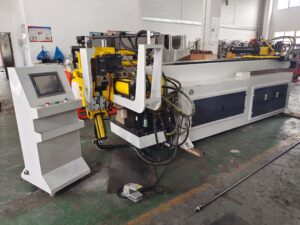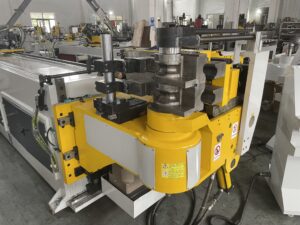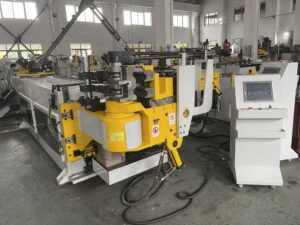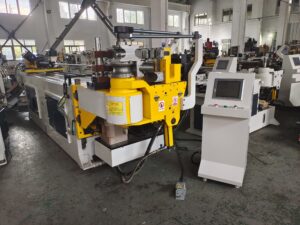Why Pipe Cutter Instead of Saw: A Comprehensive Guide to Mastering Pipe Cutting Techniques
When it comes to cutting pipes for mechanical projects, many professionals wonder: why pipe cutter instead of saw? In today’s rapidly evolving industrial landscape, selecting the right tool can dramatically affect the quality, speed, and safety of your work. This article delves deep into the discussion, offering detailed guidance on the use of pipe cutters over saws.

1. Technical Advantages: Why a Pipe Cutter Excels Over a Saw
Precision Cutting and Reduced Burrs
One of the principal reasons many professionals choose a pipe cutter instead of saw is the precision it offers. Pipe cutters come with adjustable cutting wheels that allow users to gradually tighten the tool around the pipe, ensuring a consistent and even cut. This method minimizes the need for post-cut finishing and virtually eliminates the formation of rough edges or burrs—which are prevalent when using a regular saw.
Clean and Smooth Finish
In addition to precision, the pipe cutter ensures a smoother finish. Engineers and technicians frequently report that saw-cut edges often require additional deburring, which not only prolongs the process but also increases the risk of inconsistencies. With a pipe cutter, the cutting wheel continuously scores the pipe surface, leading to a clean, professional finish that demands little to no further processing.
Efficiency in Challenging Work Environments
When working on-site or in environments where the pipe material is exposed to contaminants, dust, or moisture, the pipe cutter’s mechanism offers a resilient choice. The cutter’s wheel is designed to deal with grime and corrosion to some extent, whereas a saw’s blade can get clogged and require frequent cleaning. This reliability in tough conditions is a major technical advantage.
Ergonomic Advantages and Reduced Operator Fatigue
Beyond its mechanical benefits, using a pipe cutter is less physically straining than employing a saw. Saws, especially when dealing with thick or long pipes, can impose significant force on operators, leading to muscle fatigue and potential injury. The ergonomic design of many modern pipe cutters allows for controlled, low-force operation that minimizes physical stress while maximizing cutting precision.
2. Operational Efficiency: Precision, Safety, and Consistency
Enhanced Efficiency in Field Operations
In industries like construction or shipbuilding, where large volumes of piping systems are installed under strict timelines, operational efficiency is paramount. Because a pipe cutter allows for swift adjustments and faster execution of cuts, it ensures that projects remain on schedule. The reduced need for rework or finishing touches after the initial cut translates into significant time savings.
Safety Improvements with Dedicated Cutting Tools
Safety is a primary concern in any mechanical process. Saws, even when operated by experienced professionals, carry inherent risks such as accidental overcuts or blade slippage. These incidents can lead to injuries or result in compromised structural integrity. The pipe cutter, with its steady clamping mechanism and controlled cutting action, reduces the likelihood of such mishaps. Moreover, the enclosed cutting wheel design minimizes the risk of accidental contact, making it a safer option for operators.
Consistency in Cut Quality
Consistency is the backbone of mechanical fabrication. A pipe cutter’s design ensures that every cut is uniform in nature. This leads to enhanced assembly quality in systems where precision measurements are critical. Consistency not only accelerates the downstream processes (like welding or joining) but also reduces material wastage by avoiding miscuts that are common with saws.
3. Material Compatibility: From Copper to Stainless Steel
Cutting Various Materials
Different pipe materials respond differently to cutting tools. The versatility of a pipe cutter makes it an ideal solution for a broad spectrum of pipe materials:
- Copper Pipes: Used in plumbing and HVAC systems, copper pipes are soft and malleable. A pipe cutter’s adjustable wheel is especially effective for copper, providing clean cuts without deformation, which is crucial to maintain water-tight connections.
- PVC and Plastic Pipes: These often require tools that can handle softer materials without causing cracks or distortions. Pipe cutters designed for plastic offer a delicacy that saws typically lack, preserving the integrity and functionality of the pipe.
- Stainless Steel and Brass: Though these materials are harder, specific pipe cutters are engineered with stronger cutting wheels that can handle the challenges while still achieving a precise cut.
- Heavy-Duty Industrial Pipes: For applications in chemical plants or oil refineries, pipes made from robust materials demand tools that can deliver consistent results. Pipe cutters with hardened wheels and adjustable clamping mechanisms meet these rigorous demands more effectively than a standard saw.
Impact on Downstream Assemblies
The quality of a pipe cut has a direct impact on subsequent processes such as sealing, welding, or threading. Even the smallest irregularity can lead to leaks or improper fits down the line. With a pipe cutter, the fine-tuned scoring and controlled cutting procedure ensure minimal deformation, enabling secure and reliable downstream assemblies.
4. Case Study: Transforming an Industrial Installation with a Pipe Cutter Instead of Saw
Background
In 2021, a large-scale industrial facility in the Midwest—specializing in the processing of liquid chemicals—faced critical downtime due to extensive pipeline renovations. The project involved replacing aging pipes in a reactor cooling system, where precision was non-negotiable due to the hazardous nature of the chemicals involved. Traditionally, the team had relied on conventional saws for cutting pipe sections, but frequent mis-cuts, excessive burr material, and safety incidents prompted the facility manager to explore alternative methods.
The Decision-Making Process
After reviewing several options, the facility manager opted to trial a state-of-the-art pipe cutter specifically designed for medium to heavy-duty applications. The decision was based on multiple factors:
- Precision Requirements: In a chemical processing plant, any deformation or burr on a pipe can compromise the integrity of seals, risking chemical leaks.
- Safety Enhancements: Operators’ safety was a paramount concern, especially in hazardous environments.
- Time Efficiency: Given the tight project deadlines and the cost implications of downtime, efficiency was a critical factor.
Implementation and Operation
A skilled team of technicians was trained on the new pipe cutter, emphasizing its operation in a controlled, methodical manner. During the installation process:
- Pre-Cut Planning: Each pipe was measured carefully. Technicians adjusted the cutter’s diameter and wheel pressure to suit the diameter and material of the pipes.
- Execution: The cutter was slowly rotated around each pipe. This gradual tightening cut through the metal without causing the pipe to distort.
- Post-Cut Inspection: Each cut was then inspected for uniformity and edge quality. The results were immediately apparent: a flawless, smooth finish that eliminated the need for extra deburring.
The Outcome
The introduction of the pipe cutter instead of the traditional saw led to several transformative outcomes:
- Increased Precision: The cuts were uniform and precise, reducing the risk of leaks and ensuring a secure fit during pipe assembly.
- Enhanced Safety: The controlled operation minimized accidental injuries that had previously occurred with the saw.
- Time and Cost Savings: The project was completed 25% faster than prior installations using saws, and the reduced need for post-processing further cut costs.
- Operator Feedback: Technicians reported a significant reduction in fatigue and stress, highlighting the ergonomic benefits of using a pipe cutter.



